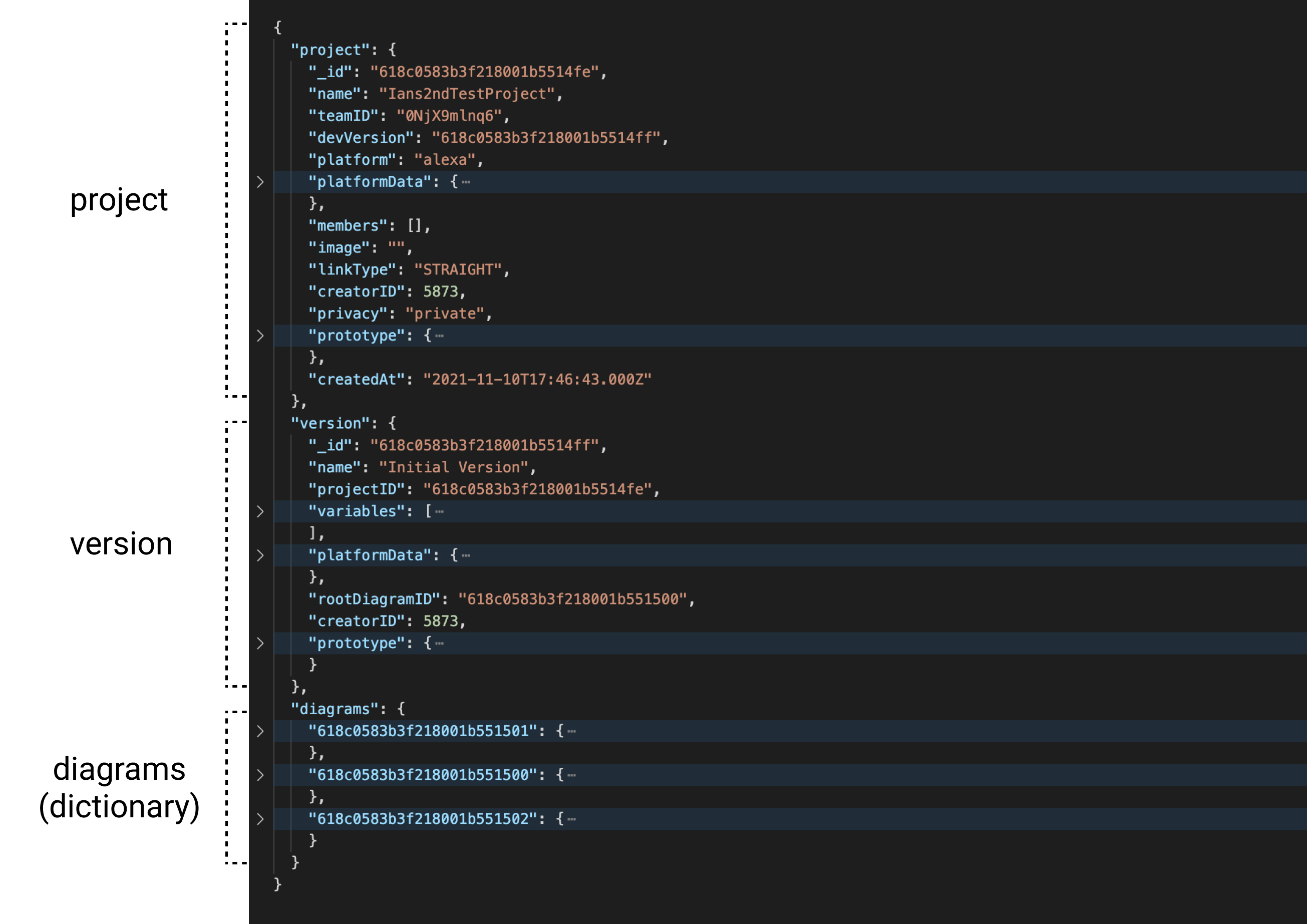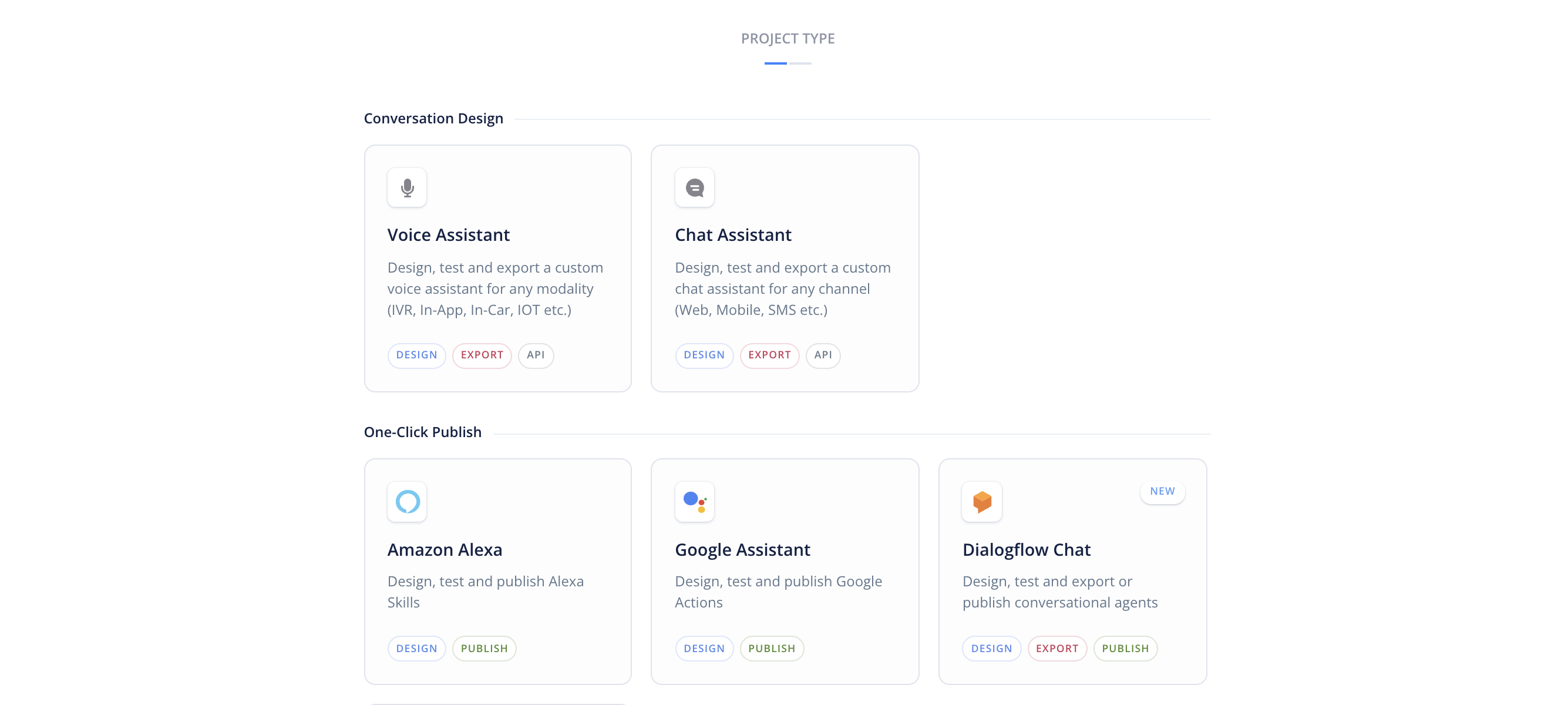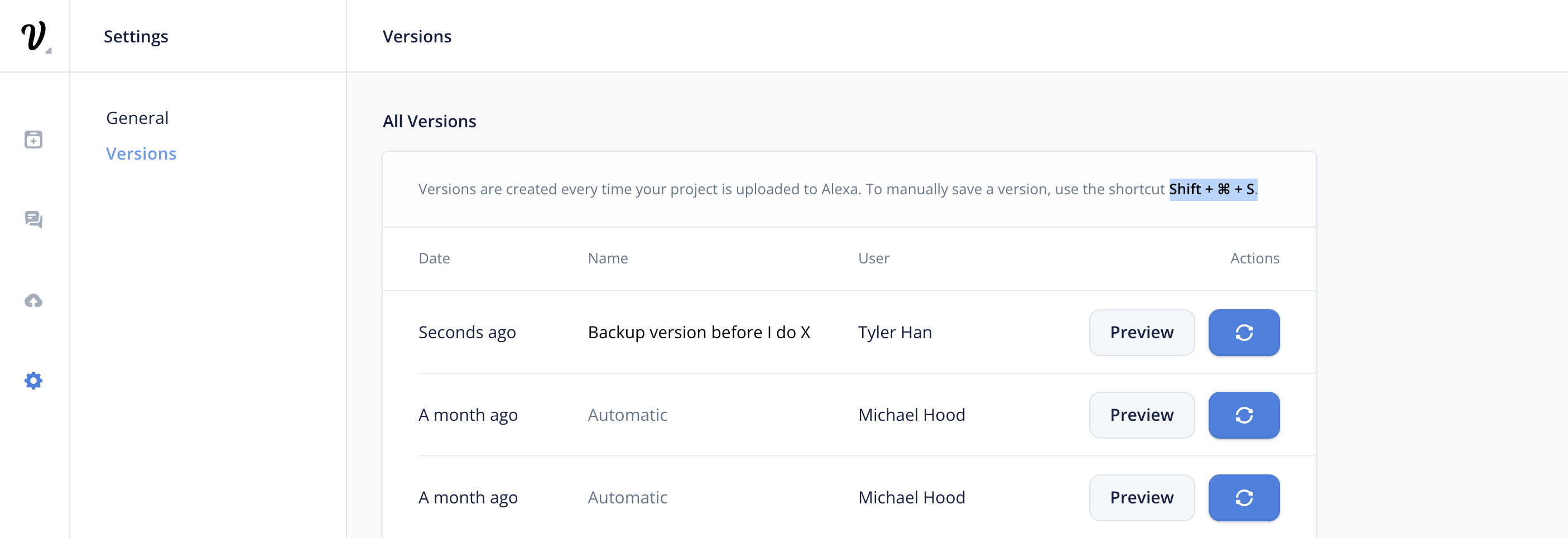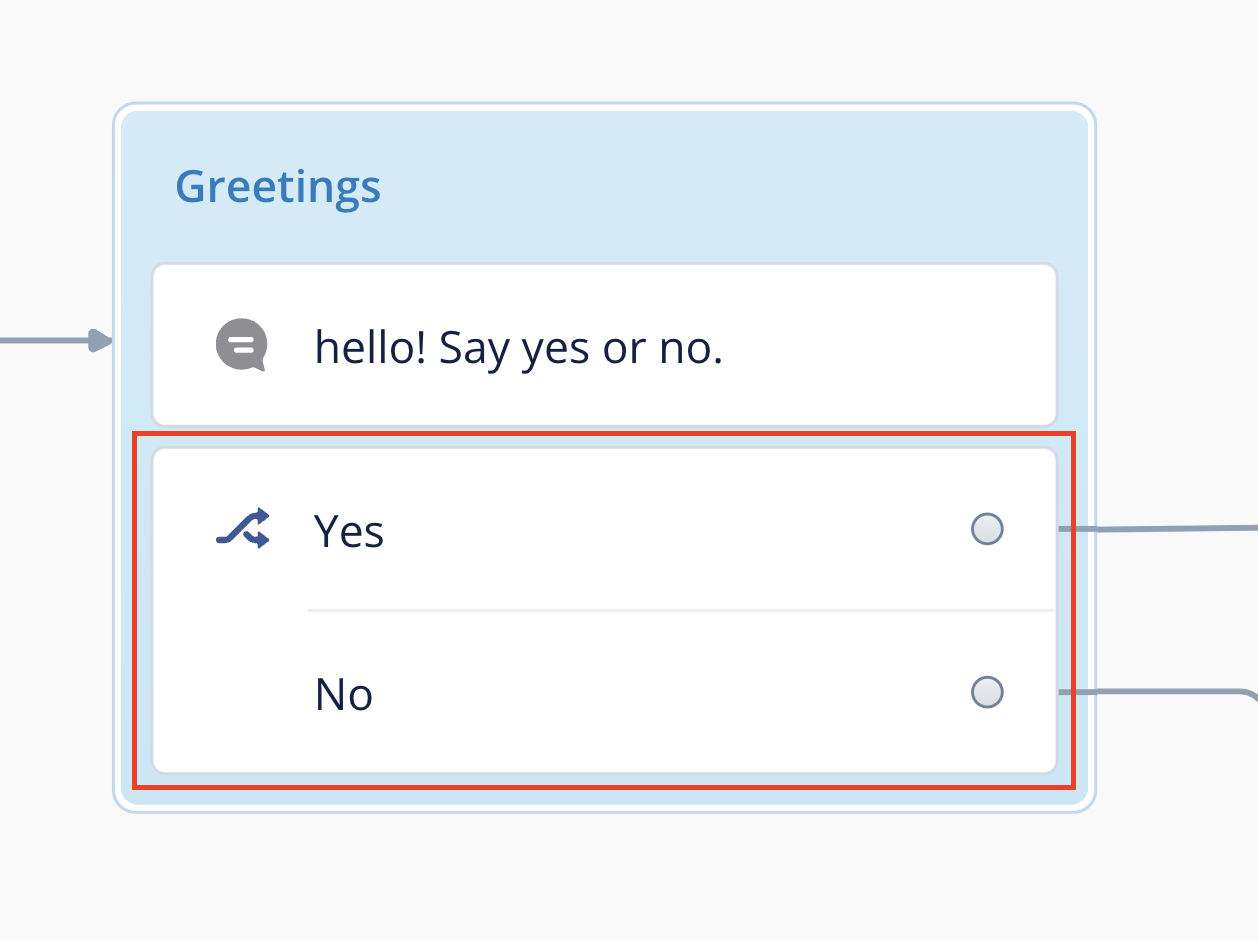Learn the structure of a Voiceflow project file
In this guide, we will cover the composition of the Voiceflow Project file (.vf file).
In this guide, the term "project" is used to refer to an Agent.
It's broken up into 3 parts: Project, Version, and Diagram, each of which will be covered here.

Voiceflow project file export
Project
Project metadata, associated with a particular team/workspace

_idunique ObjectId Identifying this particular projectnamename of the projectteamIDteam/workspace that this project belongs to, hash-id stringdevVersionObjectId pointer to the main working version on the projectplatformthe channel of the project (alexa, google, chatbot, twilio, etc...)platformDataproject metadata for the particular platform typemembersdistinct metadata for members working on the project -(configurations or settings that different members might have)
...other fields with more additional metadata for various functions
Version
A project can contain many versions, the devVersion is the main working version. Versions can be used for staging as well as backups.

_idunique ObjectId Identifying this particular versionnamename of the version (i.e. "backup save before change X")projectIDproject that this version belongs torootDiagramIDObjectId pointer to the home/root diagram. This is the starting point.platformDataversion metadata for the particular platform typeintentsslots
variablesarray of global variable names
...other fields with more additional metadata for various functions
Diagrams (Topics and Flows)
Version: A version contains many diagrams, with the rootDiagram being the entry point during runtime.
Can find all diagrams of a version searching against the versionID index.
These might also be referred to as topic, or component. Both are types of diagrams. An older name for diagrams is "flow"
Topics: topics are all on the same level. Can be thought of as extensions of the home diagram. On runtime they blend together like one giant diagram.
Components: components are modular, reusable pieces. You can think of components similar to functions in programming. When a component gets called, it is added to the "call stack", and pops off when it is finished.
_idunique ObjectId Identifying this particular diagramnamename of the diagramtypetype of diagram:TOPICorCOMPONENTversionIDversion that this diagram belongs tonodesdictionary of all the nodes in the diagram, referenced by theirnodeID. This is where most of the data lives.variablesarray of diagram-level variable names (local variables)
...other fields with more additional metadata
Nodes
Every node has:
- unique
nodeID(only needs to be unique per diagram) typecanonical type of nodedatathat houses metadata for the node.
blocks or steps are types of nodes

A block is comprised of steps, and usually, the last step in the block will have ports. There are "implicit" ports between steps within the same block.
A line coming out of a port can be connected to another block or step.
Special steps might have no ports, or can not be connected to (they are a triggered event)
Markup, images + text on canvas with no functional purpose, are special types of nodes.
Blocks
Blocks contain a steps property in data that references their children steps, in this case, a speak step + a choice step are always of type: block.

Below is what the above "Greetings" block looks like in JSON form.
"619a67a19eb63ecb29430946": {
"nodeID": "619a67a19eb63ecb29430946",
"type": "block",
"coords": [
764.7499999999999,
125
],
"data": {
"name": "Greetings",
"color": "blue",
"steps": [
"619a67a19eb63ecb29430943",
"619a67b59eb63ecb2943094f"
]
}
},
Steps

See what the "choice" step looks like in JSON form below:
// simplified version
"619a67b59eb63ecb2943094f": {
"nodeID": "619a67b59eb63ecb2943094f",
"type": "interaction",
"data": {
"choices": [{
"intent": "VF.YES", "action": "PATH"
},{
"intent": "VF.NO", "action": "PATH"
}],
"ports": [{
"type": "else",
"target": null,
},{
"target": "619a67bc9eb63ecb29430959",
},{
"target": "619a67bf9eb63ecb29430967",
}
]
}
}
type is the canonical type of the step. There will always be ports under the data, which target another node.
Everything else in the data is metadata dependent on the particular step type.
Required Fields
Below are the required fields in the VF file that are needed for successful import.
{
"project": [
"name",
"creatorID",
"teamID",
"platform",
"platformData",
"members"
],
"version": [
"creatorID",
"projectID",
"name",
"rootDiagramID",
"platformData",
"variables"
],
"diagrams": {
"[DIAGRAM ID]": [
"name",
"versionID",
"creatorID",
"variables",
"offsetX",
"offsetY",
"zoom",
"nodes",
"modified"
]
}
}